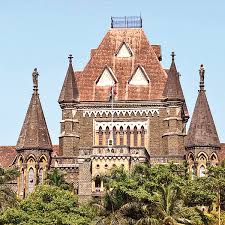By Aditya Pratap, Advocate at Bombay High Court
Founder, Aditya Pratap & Associates, Advocates and Law Offices
The megapolis called Mumbai has recently acquired new-found infamy in the wake of numerous fire incidents, which have caused considerable loss of life and property. Be it the inferno at Kamala Mills or the blaze at Crystal Tower in Parel, fire proved to be a deadly nemesis for both, the rich and the poor. According to statistics issued by the Mumbai Fire Brigade, Mumbai saw 48,434 fires between 2008 to 2018, with 600 people losing their lives. These figures are not only alarming but also call into question the enforcement of development control regulations which are meant to reduce the risk in the first place.
Laws Governing Fire Safety in Mumbai – Reduced to Paper Tigers:
Fire safety in Mumbai is governed by a series of laws, which included the Development Control Regulations of 1991 (now 2034) and the Maharashtra Fire Prevention and Life Safety Measures Act of 2006 (referred to as the “Fire Act” in this article). While the Development Control Regulations are concerned with the architectural and technical aspects of building design, the Fire Act requires building owners and occupants to install fire fighting measures and ensure proper evacuation measures in the case of fire emergency.
Despite infringement of both these laws punishable with criminal penalties, it is a travesty that they have been reduced to paper tigers. Builders, in connivance with public officials, obtain approvals for plans which are prima facie illegal. Such building plans are devoid of marginal and rear open spaces to such an extent that even automobiles, let alone heavy fire engines, cannot drive around them. Further recreational areas meant for gardens are passed off as paved access areas, thereby denying residents of critical open spaces of extreme importance to health and life safety.
The Maharashtra Fire Prevention and Life Safety Measures Act, 2006 – An Overview:
The Maharashtra Fire Prevention and Life Safety Measures Act of 2006 was passed in order to enhance the effectiveness of fire prevention and life safety measures in different types of buildings in the State of Maharashtra. The Act contains comprehensive guidelines towards securing the fire safety of old as well as new buildings in the State of Maharashtra.
The Fire Prevention Act applies to all building owners and occupants. Even licensees and tenants are classified as ‘occupiers’ and hence, are duty bound to comply with the provisions of the Act. Under Section 3, every building owner or occupier is duty-bound to provide adequate fire-prevention and fire-fighting measures within their buildings. Further, no completion certificate shall be granted to a new structure unless it contains the requisite fire safety measures as mandated under the Act.
The duties required under Section 3 of the Act include maintaining fire pumps, hoses, fire extinguishers as well as keeping fire exits clear of obstacles. The first responsibility for compliance would fall on the building owner or the cooperative housing society managing the building. If they are not present, then the responsibility would fall on the occupants. Further in order to ensure compliance. Further, a certificate, duly signed by a licensed fire expert, must be submitted every six months to the Chief Fire Officer stating that all fire safety measures and equipment are in working condition.
Under Section 5, the Chief Fire Officer has the power to inspect any building after giving three hours’ prior notice. If he finds any fire fighting equipment defective or encroachments in the fire exits and refuge areas, then he can direct their immediate removal to ensure the safety of their inhabitants. If any person refuses to comply with the Act or directions issued by the Chief Fire Officer, then the building or premises can be sealed under Section 8 of the Act. Further imprisonment up to three years is provided for persons acting in violation of the Act, along with heavy fines.
With an incidence of building fires on the rise in Mumbai city, strict enforcement of the Maharashtra Fire Prevention Act, 2006 has already commenced. Inspection visits by Fire Officers are on the rise and they can be routinely seen inspecting residential buildings. Therefore it is imperative that not only housing societies but also their individual resident members take interest in ensuring their building’s compliance with the provisions of the Act. Regular organisation of fire safety drills along with sensitization programs will mark a step forward in this direction. Only then would Mumbai be able to overcome the horrors of gruesome infernos that have brought it much infamy in recent times.
(Disclaimer: The views expressed by the author is his own. AT takes no responsibility for the same.)






If the fire auditor points out a fire hazard by a member of the co-op society what action the managing committee should take
Is d maha fire prevention & safety act 2006 applicable to row bunglow structures prior to yesr 2006 where a row bunglow is not taller than about 15 feet appx .??